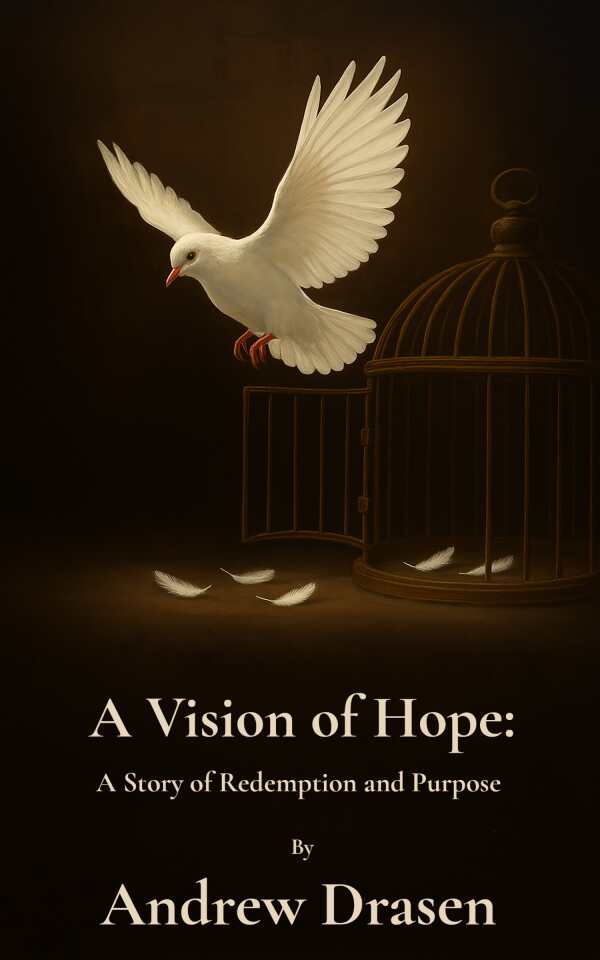A Vision of Hope
A Story of Redemption and Purpose
The activist’s memoir A Vision of Hope draws on personal experiences with family addiction and incarceration to propose systemic reforms.
Andrew Drasen’s reflective memoir A Vision of Hope combines personal confession with civic advocacy.
The book’s alternating chapters move along two distinct strands. The narrative chapters recount Drasen’s life within a middle-class family marked by addiction and loss. Each details a particular moment or relationship in his life, as with his family holidays at the Blackhawk Campgrounds, attending a selective school, his first love, and his life with his siblings, parents, and grandparents.
In writing about his elders, Drasen articulates how their struggles predated his own. For example, he covers his grandfather’s alcoholism, which shattered his relationships; other family members, the book reveals, dealt with substance dependency themselves. In this way, the book reveals generational patterns of coping and evasion, subjects that it handles with empathy.
The other narrative thread is made up of Drasen’s journal entries, written from within the Milwaukee prison system where he was incarcerated for drug-related issues. They are set apart in italics. In them, Drasen attempts to maintain his sense of purpose while in confinement.
In his journal entries, Drasen’s detailed descriptions focus on his daily routines, morning counts, limited privacy, and the politics of survival. He recalls encouraging other inmates to see the humanity in one other. However, the details sometimes become excessive in these entries, in particular when it comes to procedural information: Drasen recounts hearings, transfers, and daily routines in a way that slows the book’s momentum.
The book’s compelling advocacy calls emerge from Drasen having witnessed the recurring costs of untreated issues and systemic flaws. He champions practical alternatives to the carceral system, including restorative justice programs, community service, and education-driven rehabilitation, in detailed, logical, and actionable terms. These arguments for reform complement his personal story well, including as he records the monotony that defines incarcerated life.
Throughout, the prose is vulnerable, straightforward, and colloquial, but also assertive in addressing themes like taking responsibility for one’s actions and institutional obstacles to reform. It argues that the prison system’s focus on punishment squanders both human potential and taxpayer dollars, with various unattributed data points shared in support of these perspectives. When Drasen describes learning to pray and mentoring others, though, the text achieves its greatest clarity, underscoring its central notion that redemption is both collective and individual. However, the book is quite dense, and its text is compressed on narrow-margined pages, impeding easy engagement.
A candid memoir–cum–social science proposal for systemic reform, A Vision of Hope argues that moral renewal and social reinvestment begin with faith in the possibility of change.
Reviewed by
pine breaks
Disclosure: This article is not an endorsement, but a review. The publisher of this book provided free copies of the book and paid a small fee to have their book reviewed by a professional reviewer. Foreword Reviews and Clarion Reviews make no guarantee that the publisher will receive a positive review. Foreword Magazine, Inc. is disclosing this in accordance with the Federal Trade Commission’s 16 CFR, Part 255.

